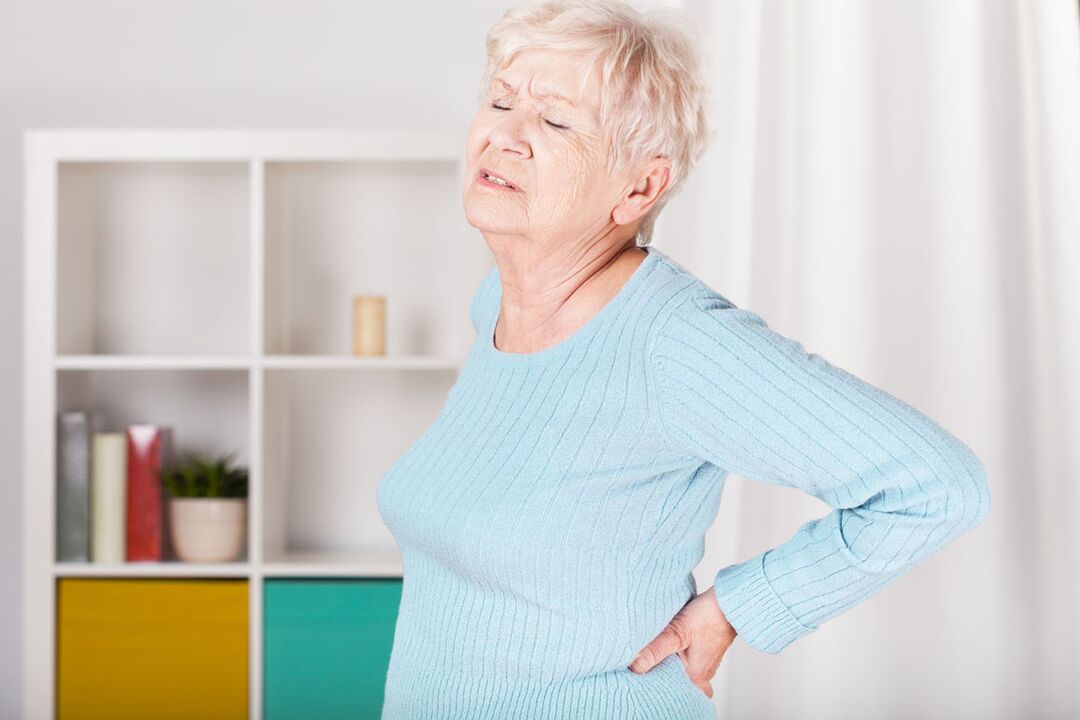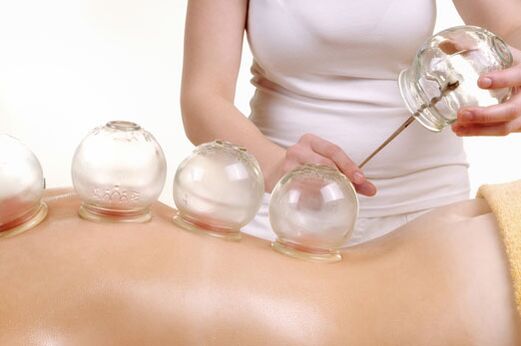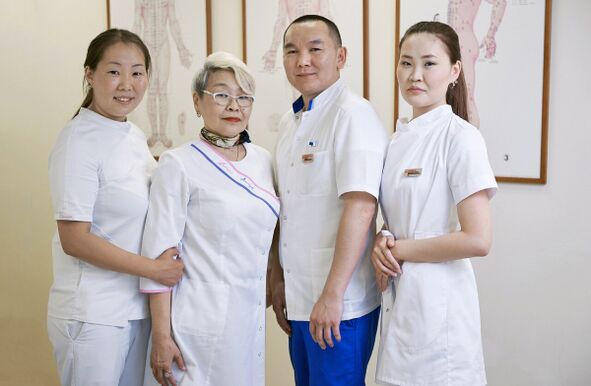We’ve all experienced back pain at least once - from mild malaise to excruciating thoracolumbalgia (pain in the lower back, chest region). Discomfort in the lower back from time to time can be a manifestation of a wide range of diseases.

The most common cause of pain is spinal osteochondrosis, which occurs in most people after 35 to 40 years. However, it does not explain the severity and duration of the pain. To understand the nature of diseases, one must understand the problem and its origins in detail.
Causes
There are many answers to the question of why your back hurts. The main mechanisms of pain syndrome remain dystrophic and degenerative changes in the intervertebral discs. As a result, subluxation of the joints and compression of the nerve endings in the spine increase the symptoms.
Let's look at the different causes of low back pain:
- Primary diseases of the spine: intervertebral hernias, osteochondrosis, spondylosis, kyphosis, scoliosis, arthritis.
- Injuries, bruises, fractures, tumors. They are mentioned as a secondary cause of pain syndrome.
- Cardiovascular diseases.
- Nephrology: sand or kidney stone.
- In women, pain can also be associated with gynecological problems, even during menstruation.
Causes of Pain Syndrome:
- sedentary lifestyle, sedentary work. This item includes a long stay at the wheel of a car or computer monitor;
- overweight, obesity;
- pregnancy involves a combination of weakened back muscles and weight gain;
- excessive physical activity (in everyday life or in the gym);
- is hypothermia of the body.
Possible Diseases
The nature of the pain depends directly on the disease that caused the symptom. In primary pathology (arthritis, intervertebral hernias), the lower back hurts in a monotonous way: the pain increases or decreases as the position of the body changes. Goose bulge sensation is accompanied by burning, alternating numbness in the lower limbs. The dull pain observed in lumbosacral radiculitis is felt not only in the back but also in the buttocks, legs and thighs.
Diseases of the internal organs (angina pectoris, pyelonephritis)are characterized by a more pronounced and lasting nature of pain, which persists even after rest or changes in body position. Thus, in the case of gynecological problems, the lower abdomen is also concerned, and with cardiovascular pathologies, shortness of breath and shortness of breath are detected.
Important! Specific pain in the lumbar region along with high fever may be a manifestation of emergency conditions - renal or gallstone colic, unstable angina pectoris.
Aggravated osteochondrosismanifests itself in sharp, shooting pains - lumbago ("lumbago"), which radiates to the legs and pelvis in case of cough or rapid movements. Herniated disks have the following characteristics:
- tilting impossible without first squatting;
- difficult to lift without support (chair, knee);
- In a supine position, the patient is forced to put a pillow.
inflammatory processes (myositis, radiculitis)are associated with painful pain and the inability to perform elemental operations because the simplest movements are limited by pain syndrome.
Fractures and displacementsare accompanied by intense, increasing pain, swelling of the injured area. The color of the skin above the painful surface changes to blue or red (depending on the nature of the injury).
How to get rid of low back pain
Excessive physical activity or long-term exposure to drafts will cause back discomfort in the near future. Let’s take a closer look at simple and quick help for familiar, annoying pain.
If the pain syndrome occurs after hypothermia or inflammation of the roots of the spinal cord (sciatica), a hot shower will help. Any physical activity is contraindicated after bathing procedures. Analgesic ointments have warming, decongestant and anti-inflammatory effects.
In osteochondrosis, pain can be reduced thanks to anti-inflammatory ointments and gels, as well as special exercises to relieve intervertebral discs and muscle ligaments.
Bruises or sprains cause increased swelling. Dry cold compresses (ice from the freezer wrapped in a cloth) help reduce or prevent it. Apply every few hours for two days to the painful focus for half an hour.
It is worth noting that only a specialist can correctly diagnose the cause of pain and prepare a treatment program. Therefore, we recommend that if you experience alarming symptoms, sign up for a consultation at our clinic.
Treat and prevent back pain
Western medicine is represented by three main therapeutic areas:
- medicated;
- is not a drug;
- surgical.
Medication includes taking tablets and topical application of ointments, gels, patches. The main groups of drugs are:
- non-steroidal anti-inflammatory drug - NSAID (painkiller, anti-inflammatory);
- heparin ointments (relieve swelling, improve venous outflow);
- papaverine ointments (relieve pain, relieve pain spasms, dilate blood vessels);
- chondroprotectors (restore cartilage tissue);
- muscle relaxants (eliminate muscle tension).
An injection course is prescribed to prevent chronic conditions. The process of treating lumbar pain almost always involves vitamin B injections, which improve metabolic processes and nerve fiber recovery, stabilize the work of the central and peripheral nervous system, and restore impulse transmission. Analgesics are added to the composition of the drug to enhance the therapeutic effect. Vitamins are combined with NSAIDs.
In the acute state, physicians perform therapeutic blockades. They are most commonly used for diseases of the spine and joints. Your doctor will also give you anti-inflammatory medicines and adrenal hormones. Prednisolone or dexamethasone (the main members of the group) anesthetize the affected area, relieving swelling.
Non-drug therapy means physiotherapy - massage, cold treatment (cryotherapy), warming of the affected areas. Physiotherapy is usually prescribed in a subacute state or in remission.
Surgical treatment. Surgery is used in extreme cases - malignancies, destruction of the spinal cord, compression fractures. Surgical treatment of herniated plates provokes professional controversy: the positive effects of surgery are often not self-evident and the risk of complications is too high.
Preventive measures:
- Do morning exercises, be sure to include exercises that stretch your lower back muscles.
- Proper nutrition. Fried, salty, starchy foods, alcohol - everything that contributes to the development of gastrointestinal diseases should be excluded. It is necessary to add fiber, vitamins to the diet, cook meat and fish steamed or in the oven. To improve blood circulation and interarticular fluid production, it is recommended to drink no more than 1. 5 liters of water (in the absence of contraindications).
- Monitor your posture.
- Walk or exercise regularly while sitting.
- It is advisable to sleep on orthopedic pillows and mattresses.
Treatment at the Tibetan Medical Clinic
Tibetan traditional medicine considers lumbodynia a violation of the three constitutions. The outraged dosha bile cramps the muscles of the back. Excited mucus leads to endocrinological problems and metabolic disorders. An excess of wind (responsible for the nervous system) exacerbates the disharmony of the other two constitutions.

Eastern doctors not only help to eliminate the symptoms and help to understand the cause of the disease.
The clinic is not offered to "clog" the problem with pills, hormones and injections. Once the disease has been diagnosed using ancient oriental techniques, the patient receives a unique treatment plan. The basic pattern of treatments used by Tibetan physicians is
- Nutrition correction and restoration of mental comfort, emotional background.
- Herbal medicine. Herbal and herbal preparations treat the problem from the inside. Multi-component Tibetan preparations restore the balance between the three constitutions: "Wind", "Slime", "Bile". Individual collections not only stop the symptom, but also have a healing effect on the whole body.
- Acupuncture. The effect of needles on bioactive points relieves vascular and muscle cramps, increasing blood flow to injured areas of the back.
- Acupressure massage. The specialist pushes the chronic diseases of the internal organs to the points of the energy meridians with his fingers.
- Cupping massage (vacuum) improves microcirculation not only in painful areas but throughout the body.
- Moxotherapy. The wormwood restores the balance of the three doshas, the integrity of the entire system. Stone therapy. Cold and hot stones neutralize swelling and inflammation.
- Tsubotherapy is one of the acupuncture options with metal balls. The tiny balls are plastered on the bioactive points for up to 2 weeks.
- Hirudotherapy - cleansing a decayed body with leeches, normalizing the body's metabolic processes.
The effectiveness of Tibetan methods in the treatment of musculoskeletal disorders has been demonstrated and confirmed by our patients.

















































